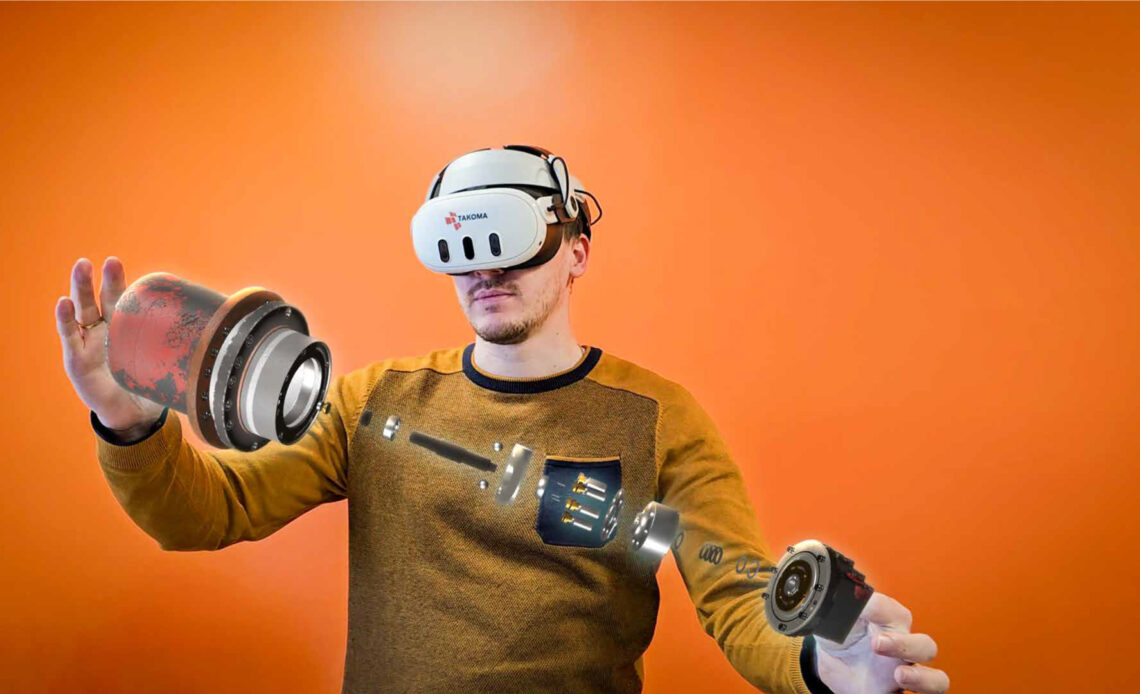
TAKOMA uses mixed reality to take training design one step further.
Crédits photos : TAKOMA
TAKOMA supports companies in their adoption of immersive technologies for training purposes. As France’s leading provider of customised digital training, TAKOMA is involved from the consultancy stage right through to the implementation of the educational solution in the workplace. At Laval Virtual, TAKOMA will be presenting its new mixed reality demonstrator featuring hand-tracking. Meet the team on April 10-12, 2024 at stand A54. Interview with Michel Wilhelm, Head of XR.
Can you introduce your company?
Founded in February 2000 and with a staff of 220, TAKOMA is France’s leading provider of tailor-made digital training , with more than 300 training programmes designed and developed each year. We advise and support our customers in setting up blended learning systems, as well as in the instructional design, multimedia production and development of tailor-made digital training, whether for industry, health, energy, the automotive sector, aeronautics, banking or the luxury goods industry, for example. Supported by our R&D team, we design and create the training systems of tomorrow, particularly in the field of XR (Virtual Reality, Mixed Reality and Augmented Reality).
What will your company show at Laval Virtual 2024?
As part of Laval Virtual 2024, we are presenting a new Mixed Reality (MR) demonstrator made to measure by our development teams using the Unity engine and the Meta Quest 3 headset. Thanks to 3 user experiences, this innovative demonstrator provides a 360° view of the new training technologies now available to companies, which can play a decisive role in terms of efficiency in their training programmes.
Our MR demonstrator enables the manipulation of complex virtual objects placed in the user’s real environment to be tested using the hand tracking technique (without controllers). Objects can be dismantled, moved, placed or hung on real surfaces in the user’s environment. In addition, different levels of artificial intelligence (AI) can be used to manage voice commands, or to automatically control the movement and behaviour of virtual objects in the scene as a function of obstacles or events.
What is your company’s current innovation?
In 2024, building on our XR expertise, our company is focusing its R&D on Mixed Reality and Artificial Intelligence for training and learning. As far as Mixed Reality is concerned, the aim is to extend the potential of this technology to collaborative deployments enabling users present in the same place, or at a distance, to share MR experiences around the same virtual objects. Our ambition is to provide companies with a system that is easy to set up, technically straightforward and affordable.
What innovation do you think has most transformed the world of VR/AR?
Overall, it’s the rapid development and maturity of the hardware and associated SDKs that are driving the world of XR forward. The new headsets are making XR more accessible to the general public. It is no longer utopian to be able to free ourselves from controllers and interact with our hands in our environment. MR headsets allow users to see the real environment, opening up this immersive technology to users who had not yet taken the step because of the feeling of claustrophobia and kinetosis they could experience with VR headsets. Naturally, the use of AI will also make user experiences even more immersive, particularly in the field of training, with the ‘intelligent’ management of simulated situations, whether in the field of behaviour, safety or health, for example.
The baseline of our 26th edition is “Act For The Future”. In your opinion, how can immersive technologies impact the world of tomorrow?
Immersive technologies will play an increasingly important, credible and pedagogically relevant role in many areas of corporate training. The development of these technologies is making interaction more natural, blurring the boundary between the real and the virtual, and “forgetting” the headset, which no longer isolates the learner in a closed world. The learner can be confronted with credible, realistic situations that are totally immersive, thanks in particular to the implementation of AI in the devices.



